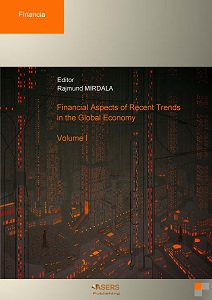SHOULD SUB-SAHARAN AFRICA OIL EXPORTER COUNTRIES BORROW MORE IN U.S DOLLAR OR EURO TO STABILIZE THEIR BALANCE OF PAYMENTS? AN EMPIRICAL INVESTIGATION
SHOULD SUB-SAHARAN AFRICA OIL EXPORTER COUNTRIES BORROW MORE IN U.S DOLLAR OR EURO TO STABILIZE THEIR BALANCE OF PAYMENTS? AN EMPIRICAL INVESTIGATION
Author(s): Yaya Sissoko, Soloman KONÉ
Subject(s): Economy, Supranational / Global Economy, Business Economy / Management
Published by: ASERS Publishing
Keywords: balance of payments; debt; financial crisis; Sub-Saharan Africa oil exporter countries
Summary/Abstract: This chapter investigates the vulnerability of oil exporter countries in Sub-Saharan Africa (SSA) to commodity price, exchange rate, and interest rate uncertainty. Although there are considerable differences among Sub-Saharan Africa nations, they do share a number of common characteristics: heavy dependence on primary commodity exports, heavy reliance on outside aid, large debt burdens, poor infrastructure, and lows level of education (see Husain and Underwood 1991, Claessens and Qian 1993). An alternative to macroeconomic policies is the use of financial hedging instruments to stabilize the balance of payments. The currency composition of a country’s external debt can serve as a hedging instrument against changes in exchange rate, interest rate, and commodity price changes. Commodity price and exchange rate changes affect both exports and imports. Furthermore, if a country has debt obligations in currencies other than its own, then its debt servicing ability will be affected by changes in exchange rate and interest rate. This chapter focuses on how a country can minimize its exposure to commodity price, exchange rate, and interest rate movements by structuring optimally the currency composition of its external debt relative to the costs of servicing the debt. The high historical volatility of currencies and export and import prices has had serious implications for the government budgets of Sub-Saharan countries, their economic stability and social welfare. A recent survey by the World Bank revealed that 70 percent of foreign borrowers in developing countries do not hedge their interest rate or exchange rate exposures. SSA countries are particularly vulnerable because: (1) they have large international borrowing requirements and the resulting external debt is denominated in different currencies; (2) most of the external debt is in obligations with variable interest rates; and (3) their trade in primary commodities is significant. A country can improve the risk characteristics of their balance of payments by holding an adequate level of foreign exchange reserves and borrowing in appropriate currency denominations. The currency composition of its external debt is a policy tool (debt composition is endogenous). This empirical investigation has determined that the US Dollar denominated debt is more attractive and desirable for these countries, given their risk profiles and the important component of oil export earnings.
Book: Financial Aspects of Recent Trends in the Global Economy - Volume I
- Page Range: 231-249
- Page Count: 19
- Publication Year: 2013
- Language: English
- Content File-PDF

